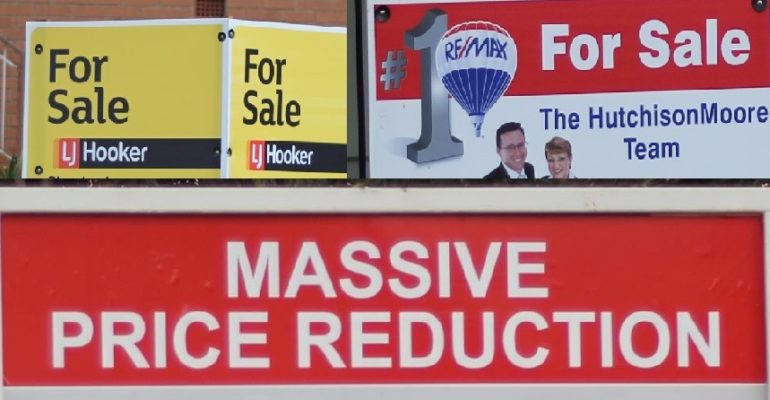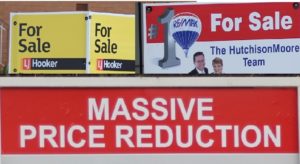

What will happen to property prices?
What happens when supply is greater than demand? Farmers, business operators and economists know that prices fall when you have excess supply.
Is housing land any different to strawberries, coal or iron ore?
The proposed Shoreline project needs to be fully considered by Redlands residents and the Redland City Council. Many questions have been raised by Redlands2030. One issue which could impact on many people is the impact of Shoreline’s proposed 4,000 new homes on property values in the Redlands.
The value of living in the Redlands
Most residents of the Redlands accept that our City provides significant locational and natural advantages like proximity to Moreton Bay, a semi rural setting, social harmony, low crime rates, great lifestyle and livability. In fact the lifestyle qualities, favored by the community, are well articulated in the Redlands2030 Community Plan. These values are often echoed by the real estate industry in their advertising efforts to sell residential land. Just look at the property section of the latest edition of the Redland City Bulletin.
Redlanders enjoy higher amenity than people living in most other local government areas in South East Queensland. Landowners would like to think that this is reflected in higher property values than those in other parts of south east Queensland and want it to stay that way.
Land values and Council rates
In March 2013 the Queensland Valuer-General issued new Site Valuations (dated as at October 2012) for properties in Redland City. The Valuer-General’s information sheet About statutory land valuations in Queensland outlines that Site Value reflects what land would be expected to sell for in its current condition (the current market value).
It was subsequently reported (Bayside Bulletin, 19 March 2013) the new median value for residential property in the Redlands was $242,500, practically unchanged from the previous 2011 valuations. Interestingly, the 2011 valuations represented a 4.9% drop from the prior valuations (Bayside Bulletin, 28 March 2012).
Official land valuations are used by local councils to determine who pays what rates. People with highly valued properties (like those in Raby Bay) pay more rates than people with lower property values.
Understandably there is a lot of confusion in the community about rates, rating value and the setting of rates. It is a common misconception that more ratepayers will mean cheaper rates. This is a common furphy since extra ratepayers need extra services which cost more to provide.
Another misconception is that increasing land values will mean increased rates. This is only true if the rating value of a property “skips” higher than its historic value compared to “other” land in the same local government area. It is the relative value within a Council’s area that is important for setting rates, not the absolute value.
But as a group, Redlands’ property owners are obviously better off if their land is more valuable as determined by market forces.
Does the supply of residential land affect land value
After the new valuations were issued, the President of the Redland City Chamber of Commerce, made the following claims (reported in the Bayside Bulletin, 21 March 2013):
- “Redland City’s median residential property value of $242,000 is ‘unacceptably’ high”
- “Redland had the second highest median residential property value in Queensland, behind Brisbane at $310,000, because of inadequate supply of suitable land for housing.”
- “It is unacceptable to have Redlands median value at $242,000 compared to similar areas such as Moreton $197,500, Sunshine Coast $205,000 and Logan $187,000”
The President of the Redlands Chamber of Commerce just happens to be Garry Hargrave who is also Principal of the Shoreline development.
Shoreline proposal
The proponents of the Shoreline development are seeking approval for the rezoning of about 222 hectares of rural land for residential and associated purposes. This application is in order to construct 4,000 new dwelling units and other facilities in an area outside the current urban footprint for Redland City..
In simple economic terms the project would deliver a significant increase in the supply of residential property.
Presumably, this will result in Redlands’ median property value no longer being “unacceptably high”.
Good news for people who want to buy cheaper property. Not such good news for people who are already investors in property in the Redlands.
Council assessment process
The impact of Shoreline on property values across the city is but one of many issues that Council has not discussed with the community.
The scale and potential impact on Redlands economic, social and infrastructure costs by this proposed development is such that Council should be facilitating a robust community consultation process. An effective way for this to happen would be for Shoreline’s proposed development to be penciled into a future planning scheme review and subjected to community review when that draft plan is released for public consultation.
A change to the planning scheme of the magnitude needed to accommodate Shoreline should be justified through a full benefit cost analysis.
A full benefit cost analysis and community review process would enable the community to appreciate the real costs and benefits. We could also see who wears the costs and who collects the benefits.
Please note: Offensive or off-topic comments will be deleted. If offended by any published comment please email thereporter@redlands2030.net
My view is that this and many other developments only makes long term sense if
a. you are imbibing in some illicit substances and now have short term memory issues.
b. You have been living in a closeted community for the last 6 or so years and just discovered that our god isn’t an irresponsible alien genetic scientist.
c. you are a functionally temporally myopic challenged politician or a developer.
Contrary to common council representative (?) logic, More isn’t necessarily good least for existing residents.
Developers have had their contribution to infrastructure costs limited by state law….this means that the shire has to pick up the difference.
The second issue is the extra usage and therefore maintenance of existing infrastructure. The developer doesn’t pay for necessary upgrades to water, power or sewerage processing, machinery administration et al nauseum. The law of diminishing returns.
The hard reality is that there is a definable point at which the return on spending becomes lesser valuable.
I.e. a sewerage pump that can cope with 60K people fails in maintenance and repair costs about 66k (10%)
So to service 70K people a 90k person pump is needed. Then there’s extra cost , the extra staff to run it the more expensive maintenance and of course the back room staff to handle the extra bills, bigger computers… you get the idea. So who pays for them? The existing ratepayers through council Borrowings and increased service fees.
Now if one considers the flow on effect of more traffic more demand for new roads and higher maintenance because of extra traffic. The list goes on and on. The problem is that I’ll bet that the previous councils didn’t budget for the massive increases in residents demanding ever more services.
Look at it this way the developer who makes 10% net on a sale of 1million is talking $100000 but that same 10% on say $100 million is a duck of a different dimension.
Now in the council’s perspective the cost is the diametrically opposite. More people and investments means more managers and higher pay for the senior execs, mayor and councillors .
Let’s be clear I’m not anti development only anti hyper jumps in it.
It seems to me that the council is also not considering the increased number of natural disasters and the rate payer’s cost. Consider for a moment the huge storm a year or so ago where all the boats were washed ashore with massive damage to beaches, paths etc.
Do we really want to be faced with increased house inundation, road wash-aways, floods etc by building that close to the shore? Regardless of whether you believe the Anthropomorphic in AGW or not the science is clear that an increase in these type of disasters are an odd on surety. From a more prosaic perspective if you have experienced bay side peak traffic grid lock one thing is sure all these extra cars ain’t going to help.
Did I mention where are they going to send their children to day care kindy or school as for higher education, hospitals… the Libs have fixed that, we won’t be able to afford any of them.